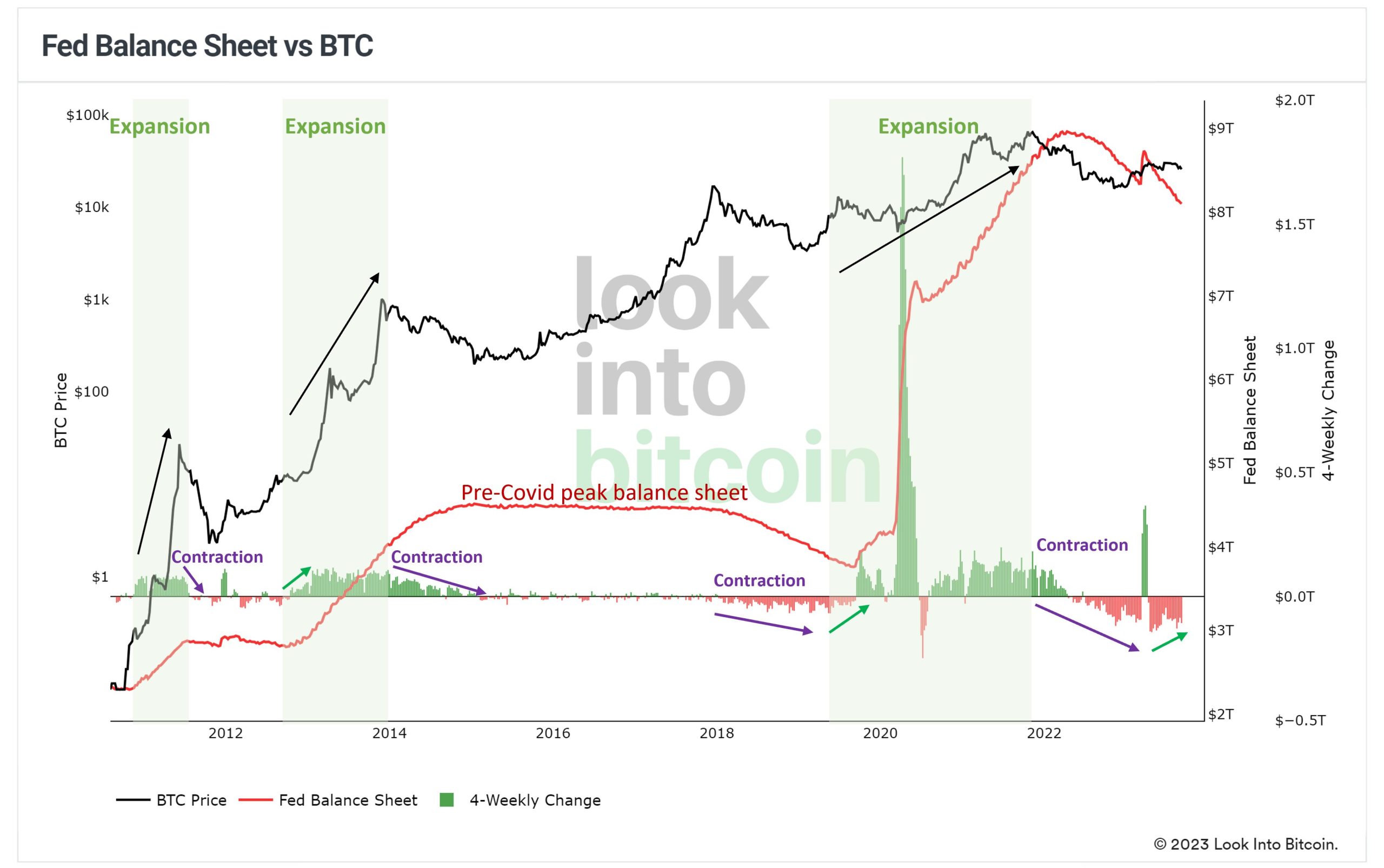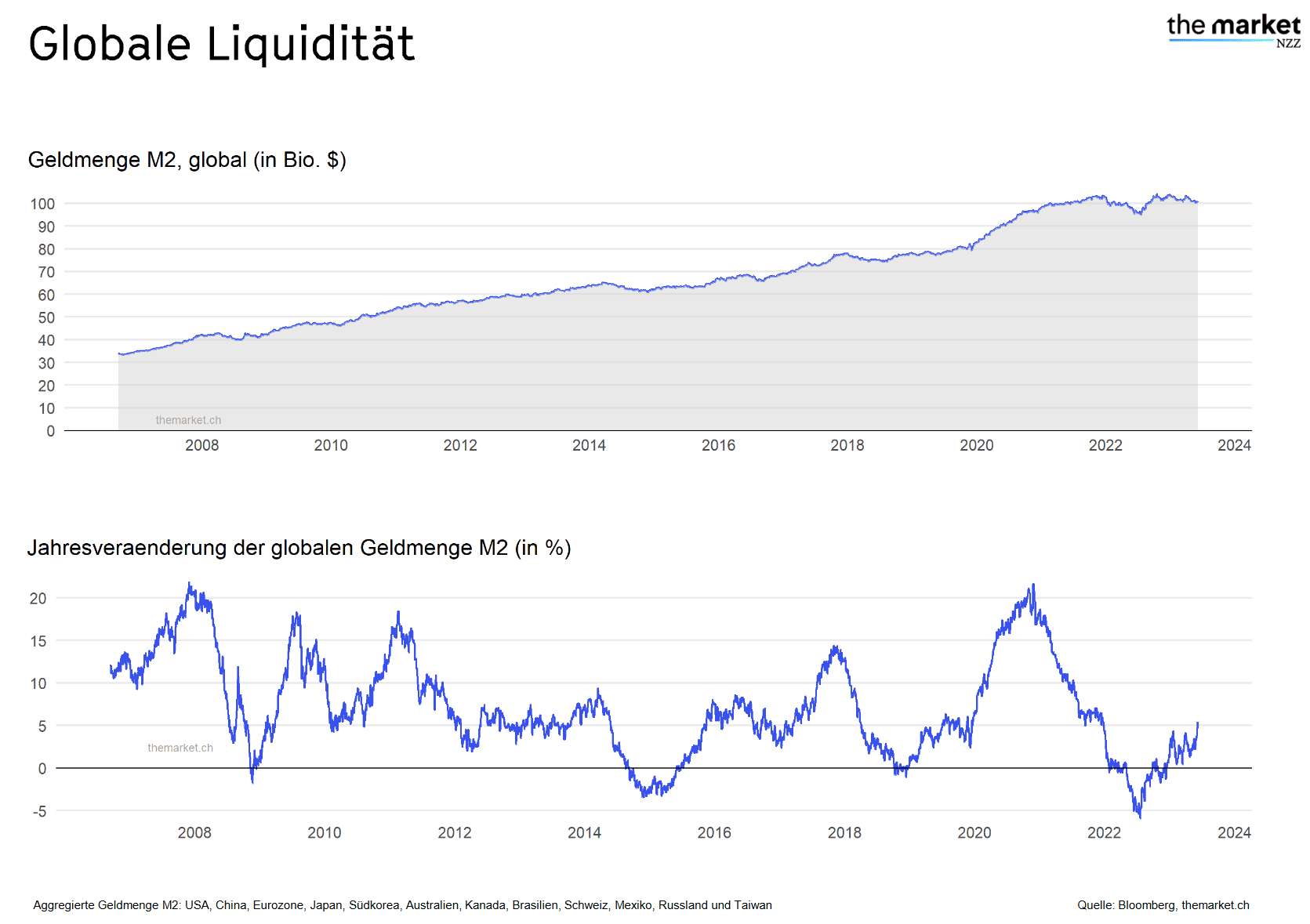News - What factors can initiate a new bull market?
By
What factors can initiate a new bull market?
These factors can determine when a new bull market in Bitcoin and other cryptocurrencies begins.
Bitcoin and the rest of the crypto market are currently struggling to get off the ground. Therefore, many are wondering what needs to happen before prices go back up. To get to the bottom of this question, we need to dive deep into the fundamental factors affecting the crypto market. Below we highlight some of the most important indicators for Bitcoin and the rest of the crypto market. For this, we look at the development of the global money supply and its influence on Bitcoin.
Disclaimer: This article represents the opinion of the author only and does not constitute investment advice or a recommendation to buy or sell.
The central importance of global money supply for Bitcoin
First of all, what is the money supply (M2)? It is an economic indicator consisting of currency, deposits and readily available savings. This value serves as a barometer of liquidity in the global financial system and gives us insight into the capital available for investment. For Bitcoin and the rest of the crypto market, the development of M2 is therefore of great importance.
In the past, global liquidity has always been an excellent indicator of Bitcoin price movements. The following chart shows this well by looking at the Federal Reserve (Fed) balance sheet (liquidity in the U.S. and the most important part of the global money supply) and the Bitcoin price.
Bron: Look Into Bitcoin
An increase in the FED balance sheet indicates more liquidity in the global financial system, which has led to more investment and, so far, always led to a rally in the crypto market. However, the development of the money supply represents only part of the global money supply. Namely only slightly less than 10%. It is therefore important to look at the development of the entire money supply if you want to understand how it affects Bitcoin.
What is the current state of the global money supply?
Looking at the current picture of global liquidity, we see that it has declined since 2022.
Bron: The Market
This has put a lot of pressure on Bitcoin and other cryptocurrencies. And especially last year, it caused a huge price drop in the crypto market. However, if we look at the annual change in global M2 money supply as a percentage, we see that it has been increasing since the beginning of the year. If this trend continues, it can be assumed that M2 will rise again globally. This in turn would be seen as positive for Bitcoin and co.
How real interest rate trends affect Bitcoin
Another important indicator of Bitcoin's attractiveness as an investment is the development of real interest rates. Real interest rates are the interest that investors can earn on their deposits, say U.S. dollars or euros, with government bonds after deducting inflation.
When they are low or negative, investors earn little or even lose money with traditional savings methods. Therefore, they start looking for better investment opportunities. Bitcoin and other cryptocurrencies may seem attractive during such times, as they are seen as a way to earn higher returns. Moreover, low real interest rates often lead to concerns about the value of normal money, making "hard" assets like Bitcoin more attractive. In short, the development of real interest rates affects how and where people invest, and may therefore increase the value of and interest in cryptocurrencies.
Looking at the current trend in real interest rates, we see that they remain at high levels. This is one of the reasons why investors are currently cautious about Bitcoin investments.
Therefore, for a renewed crypto rally, it would be important for interest rates to fall to make investments in Bitcoin and other cryptocurrencies more attractive again. Given the current interest rate policies of central banks, it is possible that they could fall over the next year.
The crypto market and the growing importance of stablecoin liquidity
Also important for a new cryptorally is the development of the amount of stablecoins in the crypto market. Stablecoins, such as Tether or USDC, provide a bridge between fiat currencies and cryptocurrencies. And the quantity of stablecoins is, in a sense, the "M2 indicator" of the crypto world.
The role of stablecoins as a store of value and a means of transferring assets makes them a crucial player in the crypto ecosystem. An increase in the liquidity of stablecoins may indicate that more capital is available that can be quickly invested in cryptocurrencies. It also shows that more investors are willing to park their fiat currencies on blockchain networks, which is also a positive sign for the overall adoption of crypto.
As of April 2022, the market capitalization of stablecoins down 26%. But this decline seems to be slowly coming to an end: In recent weeks, the market capitalization of stablecoins has stabilized at the $120 billion mark.
Bron: Glass node
So it could be that we are currently in a phase of recovery of available liquidity on blockchain networks, indicating that interest in the crypto market is returning.
U.S. government bonds and their tokenization
The ongoing tokenization of U.S. government bonds could be a major reason why investors are increasingly willing to hold their fiat back on blockchain networks. Especially the now attractive and competitive interest rates play a role in this.
An example of this is the stablecoin DAI, which has grown by about $1.3 billion since August. Linking it to the Spark protocol, a sub-DAO of MakerDAO, generates an annual return of about 5% on deposited DAI. The source of the return can be be verified on-chain and consists of a mix of real world assets (RWA).
De stUSDT of Tether is another notable example - a USDT version to be staked that is backed by real world assets, such as U.S. government bonds, and offers an annualized return of about four to five percent. The market capitalization of stUSDT shows an upward trend and currently hovers around $1.78 billion.
It is clear that stablecoin-returns are becoming competitive again due to the increasing tokenization of RWA on blockchain networks. Looking at the RWA sector as a whole, there has been a significant increase, possibly indicating a return of liquidity to the crypto markets.
Conclusion and forecast
This growing on-chain development could be the beginning of an expected influx of liquidity, which is crucial for a sustained uptrend of Bitcoin and the rest of the crypto market.
Thus, a broader view, encompassing both traditional financial indicators and on-chain indicators, paints a promising picture for 2024.
However, in addition to the aforementioned aspects, several other factors influence the crypto market. Constant monitoring of the market is therefore indispensable to make good investment decisions. The crypto world is volatile and constantly changing, and price predictions are always speculative.
Disclaimer: This article represents the opinion of the author only and does not constitute investment advice or a recommendation to buy or sell.









